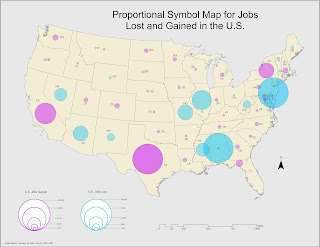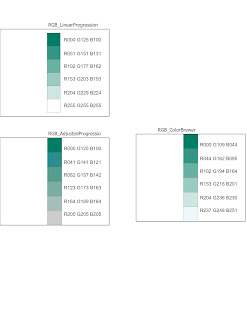Module 1- Map Evaluation & Critique
In this introductory cartography lab, we reviewed some basic aesthetics of what makes a good map and common map design principles. The exercise at hand required that we select two maps of our choice, one which we think is well designed and one poorly designed.
Evaluation of a poorly designed map:
This selection had to serve as example of nearly everything to avoid when creating a decent informative map. As more of a visual learner, busy displays can be very disruptive and intimidating.
I've seen language and dialect maps before and they can very aesthetically pleasing to the eye and inviting to process their information. I would give this map a D letter grade for effort and information alone. My main reasons for a low grade are highly due to the lack to effectively label the map, the general layout is more complex than it needed to be, and it fails to be graphically pleasing. Three areas of improvement I would suggest working on are: layout, labels, and color theme. The title indicates there’s two significant topics of interest here and they could be better presented in 2 different maps so as to not overcrowd a single map. Color choices here are very harsh making it difficult to read any text on the actual map, hues could be toned down to lighter colors for background items. There’s some symbology that stands out more than labels and titles/subtitles and other symbology that barely stands out at all. Labels overall could be redone and also reduced in number since the focus here are dialects and patterns, not land areas which could be simplified.
Evaluation of a well designed map:
When I first saw this map I immediately thought this is a great example of what I should strive for as I develop my own cartographic style. I would give this an A+ letter grade because it is easy to read, detailed, and thoroughly labeled. It achieves graphical excellence in its presentation of various data types. The overall layout seems like an example of how a map should guide its audience regardless of the amount of information displayed.
The layout is what really stood out. There’s a wealth of information for the country of Syria in this map, a lot of text and symbology to take in. But it amazed me how naturally my eyes were being guided through every map element. It also appealed to me in that I could learn quite a lot about the country of Syria given its table of Major Events in the past century, a section dedicated to geographic information, and 4 additional smaller maps focusing on significant data such as population density and oil and gas infrastructure. I feel like I learned something new by taking note of the color themes used as well and how it helps guiding the audience.
Evaluation of a poorly designed map:
This selection had to serve as example of nearly everything to avoid when creating a decent informative map. As more of a visual learner, busy displays can be very disruptive and intimidating.
I've seen language and dialect maps before and they can very aesthetically pleasing to the eye and inviting to process their information. I would give this map a D letter grade for effort and information alone. My main reasons for a low grade are highly due to the lack to effectively label the map, the general layout is more complex than it needed to be, and it fails to be graphically pleasing. Three areas of improvement I would suggest working on are: layout, labels, and color theme. The title indicates there’s two significant topics of interest here and they could be better presented in 2 different maps so as to not overcrowd a single map. Color choices here are very harsh making it difficult to read any text on the actual map, hues could be toned down to lighter colors for background items. There’s some symbology that stands out more than labels and titles/subtitles and other symbology that barely stands out at all. Labels overall could be redone and also reduced in number since the focus here are dialects and patterns, not land areas which could be simplified.
Evaluation of a well designed map:
When I first saw this map I immediately thought this is a great example of what I should strive for as I develop my own cartographic style. I would give this an A+ letter grade because it is easy to read, detailed, and thoroughly labeled. It achieves graphical excellence in its presentation of various data types. The overall layout seems like an example of how a map should guide its audience regardless of the amount of information displayed.
The layout is what really stood out. There’s a wealth of information for the country of Syria in this map, a lot of text and symbology to take in. But it amazed me how naturally my eyes were being guided through every map element. It also appealed to me in that I could learn quite a lot about the country of Syria given its table of Major Events in the past century, a section dedicated to geographic information, and 4 additional smaller maps focusing on significant data such as population density and oil and gas infrastructure. I feel like I learned something new by taking note of the color themes used as well and how it helps guiding the audience.




